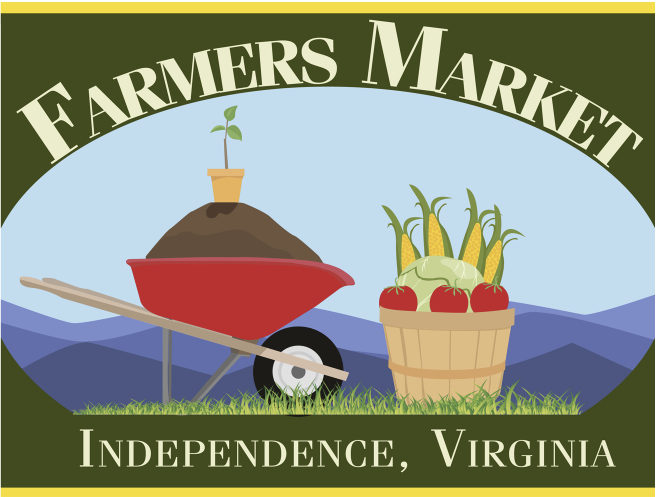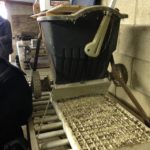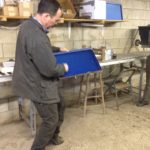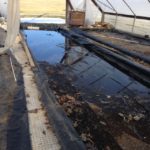The Organic Vegetable Farm tour went to Elmwood Stock Farm. A 550 acre certified organic farm that features both livestock and crops. Most of the acreage is in pasture with crops on about 75 acres. They produce feed for their animals which include 80 cows, sheep, laying hens and broilers and turkeys. The key to their success is integrating the crops and livestock in an 8 year rotation. After 5 years in perennial forage they plow and plant both feed grains and food crops. Raising their own feed ensures quality and reduces out off farm expenses.
The 1st year planting features high nutrient demanding, long season crops such as tomatoes, peppers, eggplant, potatoes, summer squash, cucumbers and melons. Plastic and drip are used. The second year crops are early, cool season crops with slightly lower nutrient needs including beets, radishes, carrots, lettuce, brassicas, chard and turnips. Overwintering spinach, onions and garlic are planted in fall and any spare ground is put in covercrops. Year three features nitrogen fixing legumes like peas, cowpeas, endame, green and dried beans. Following harvest the field is sown back to perennial forage for 5 years. Working with the University of Kentucky, they have shown that levels of organic matter and soil life are nearly the same at the end of the 5 years in pasture as undisturbed pasture.
Next we toured their seed sowing area. They make use of homemade tools to speed production and help maintain uniformity. A germination chamber minimizes heated space and speeds germination. On a smaller scale, take away lessons include using vermiculite in a thin layer to cover seeds. It helps retain moisture and can reduce seedling diseases. A small cabinet can be converted to a germination area. They also use a technique developed by tobacco growers for leafy crops. Speedling flats (a stiff Styrofoam tray) are floated in a dilute nutrient solution until ready for transplanting. This minimizes watering and fertilizing time but requires quite a bit of space.






